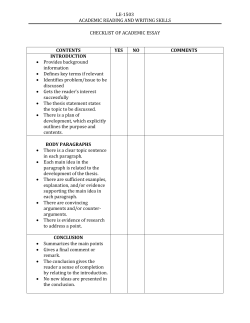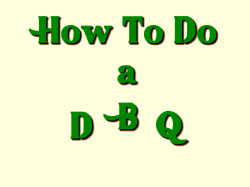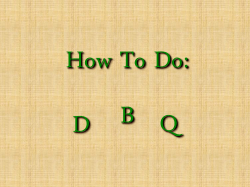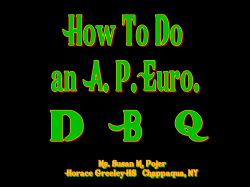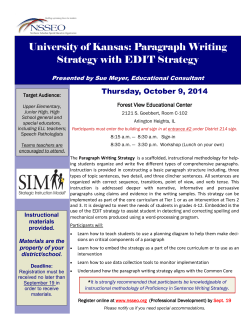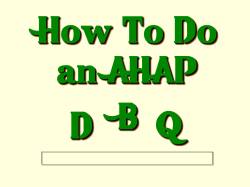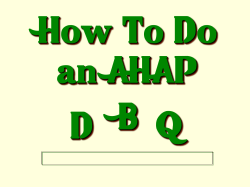
R E EFLECTIVE SSAY
REFLECTIVE ESSAY Freshman/Senior Essay #1 Consider the following topic; A rite is defined as “a formal or ceremonial act or procedure prescribed or customary in religious or other solemn use.” A rite of passage is defined as “a ceremony marking an important period in a person’s life.” In a multiple paragraph essay, describe and discuss an important rite of passage from your own experiences and reflect on how it has impacted you, your life, your view of the world or anything else about you personally. PRE-WRITE 1. Q: What is a rite? A: a formal or ceremonial act or procedure prescribed or customary in religious or other solemn use Q: What is a rite of passage? A: a ceremony marking an important period in a person’s life 2. 3. List as many events in your life you might consider a rites of passage. (Try to come up with at least10) 4. Choose one of the events from #3 and list as many details as possible. (Be bold and shoot for 20 details) A detail can be as insignificant as a smell or sound or as significant as a punch in the gut. 5. Free write (100-150 words)as much as you can about your event. Do not worry about sentence structure, spelling, grammar, punctuation, or anything else. Just write! (Due tomorrow!) THE REFLECTIVE ESSAY PURPOSE A reflective essay is a personal essay in which the author writes about a learning experience. The purpose of the essay is to explain to the reader what the experience was and how it changed, made a difference, or affected the author. CONTENT The paper focuses on analysis of the self as a learner and recognizes strengths and weaknesses. You need to paint a picture of the experience to show the reader your point of view rather than speak in general terms. The conclusion needs to explain how and why you chose the metaphors you did, or if appropriate, suggest a connection to your future or a larger topic. POINT OF VIEW This is a personal essay, and the pronoun “I” should be used consistently. Do not use “you”. TENSE Use present verb tense and past in remembered passages. THE REFLECTIVE ESSAY AT A GLANCE Introduction: This paragraph is 40-80 words or four to five sentences in length. Body Paragraph: Each paragraph contains these parts. Each is also about 100-150 words or ten or more sentences. Essays can contain as many body paragraphs as necessary to prove the thesis. Conclusion: This paragraph contains 40-80 words or three to five sentences. KEY TERMS Hook - catches reader’s attention Link – explains hook, gives background or summary information transitions to … THESIS STATEMENT (subject + opinion) Topic sentence for each body paragraph relates directly to proving thesis. Gives argument that will be presented in that body paragraph. The rest of the paragraph offers evidence (concrete detail) to support the topic sentence and explains its importance (commentary). Transitions are used between sentences. The concluding sentence Wraps up the paragraph and leads to the next body paragraph or to the conclusion. Restates the thesis in different words. Summarizes the main points of each body paragraph. State the significance or importance for the thesis. Goes further in your thinking about the thesis. REFLECTIVE ESSAY SCORING GUIDE 4 - Maintains focus on insightful and logical thesis which clearly defines learning experience 2 - May stray from thesis - Uses insufficient or inadequate examples/commentary; more summary than analysis - Contains minimal evidence of self understanding - Shows an attempt at organization, but may be missing one or more parts of the introduction, body, or conclusion, or may ramble; ineffective transitions Uses 1 st person point of view; sincere and engaging voice - Uses 1 st person point of view inconsistently; voice inconsistent - Uses a variety of sentences and purposeful vocabulary to create interest - Uses limited or predictable sentences and/or vocabulary - Contains noticeable errors in standard written English - Follows rules of standard written English; complex forms risked - Uses supporting examples/commentary which show critical analysis and/or insight - Reveals insightful understanding of self as learner - Is clearly and logically organized; transitions further progression of ideas - 3 - Maintains focus on thesis which defines learning experience - Uses examples/commentary sufficient to develop ideas - Reveals analysis of self as learner - Is organized into introduction, body, and concluding paragraphs with transitions connecting main ideas and paragraphs - Uses 1 st person point of view; consistent and sincere voice - Uses a variety of sentences with effective vocabulary - Follows rules of standard written English for capitalization, punctuation, spelling, and sentence formation 1 - Contains no clear thesis or purpose, or minimal thesis - Uses irrelevant, repetitive, or few supporting examples/commentary; mostly summary - Contains little or no evidence of self understanding - May contain only one or two paragraphs - Uses 2 nd and/or 3 rd person point of view; voice flat and lifeless - Uses simple sentences and/or vocabulary - Contains frequent errors in standard written English which impede understanding 0 - No paper, off-task, or acts of plagiarism THE INTRODUCTORY PARAGRAPH An introductory paragraph catches the reader’s attention, gives some background information about the topic in general, and states the thesis. This paragraph can be divided into three parts. 1. Introductory Technique – Some teachers call this “the Hook” or “Attention Getter.” Whichever technique you use, it must focus attention on the essay’s topic. 2. Link – This section explains the hook and leads the reader to the thesis statement. Its length depends on the type of essay. For example, if you are writing a literary analysis essay, you need to give a brief summary of the book as you lead to the thesis. 3. Thesis Statement – This is the topic sentence for the essay. It has two parts: a specific topic and your attitude about it (subject + opinion) MORE ON INTRODUCTORY TECHNIQUES 1. Definition: Explain a term that is central to the thesis. This may be a dictionary definition or the writer’s definition. 2. Rhetorical Question: This question needs to be central to the thesis and answered in the essay. 3. Startling Statement or Relevant Fact: Either one can serve to interest the reader and direct attention to the thesis. 4. Quotation: A quotation from the book works especially well when writing a literary analysis essay. Remember a quotation may be any section of the book, dialogue, description, or narration. 5. Anecdote: A short interesting or humorous incident is another popular introductory technique. With this hook, the writer must be careful to keep it short in relation to the overall length of the essay. 6. History or Background Information: This type or hook gives information that establishes context for the paper. Never start an essay with a statement such as “In this essay I am going to write about …” ORGANIZING YOUR POSITION Step 1: Figure out exactly what your answer is to the topic question and phrase it as a statement. Step 2: Decide who your audience is. Step 3: Brainstorm points/arguments that support your position. What is true about the topic that supports your point of view? Step 4: Brainstorm/research facts that prove each of your points/arguments. CONSTRUCTING A THESIS STATEMENT What do you believe to be true? What do you want your audience to agree to or learn about you? Is there an opposing viewpoint? Is your topic specific enough to argue in a short paper but broad enough to allow at least three distinct points/arguments to be made? CONSTRUCTING POINTS/ARGUMENTS Brainstorm points that are true about your topic that support your point of view. All three points should be different from one another and support the point of view you have taken with your thesis. Choose your three strongest or combine to create three and rank from strongest to weakest. FACT FINDING Research and brainstorm concrete details/examples that support each of your three points. Possible evidence includes the following: quotes from others, past events, facts, personal anecdotes. Evaluate the examples Separate fact from opinion; only expert opinions carry weight in an argument. Confirm that evidence is directly relevant to your point and does not contradict your point of view. THE BODY PARAGRAPH The body paragraphs provide proof and support for the thesis statement. A typical expository essay includes three or more body paragraphs. The more evidence the writer can provide, the more likely the reader will accept the validity of the thesis statement. Organization of body paragraphs in a particular essay generally follows one of the patterns listed below. 1. Chronological Order – time order 2. Order of Importance – least to most important argument Or second strongest, least strong, strongest argument 3. Comparison/Contrast – showing similarities and differences 4. Cause and Effect – relationship between event and outcome BODY PARAGRAPH STRUCTURE The topic sentence of each body paragraph must help prove the thesis statement. Supporting sentences give concrete proof, examples, details, and/or facts that prove the thesis (concrete details). The writer must explain the importance of each specific piece of evidence in one or two sentences following the evidence. This is often referred to as “commentary” about the evidence. Commentary means that the writer explains why the evidence helps prove the thesis in his or her own words. The paragraph’s last or “concluding” sentence brings the paragraph to a conclusion and transitions to the topic sentence of the next paragraph. Each paragraph of the essay is linked to the next one by various kinds of transitions; the sentences within each paragraph are also smoothly connected to one another by transitional words and phrases. English teachers often ask students to write body paragraphs of ten or more sentences or 100 – 150 words. The purpose of this is to make sure the paragraphs will be specific and well developed. It is a good idea to remember this when writing your essay. On the following page is a simple pattern that shows exactly how a body paragraph is structured. SAMPLE BODY PARAGRAPH Each line represents one sentence in the body paragraph. 1. Topic sentence (TS) – This idea helps prove that the thesis statement is true. 2. Concrete Detail (CD) – A fact, example, quotation, paraphrase, or piece of evidence to back up the topic sentence. 3. Commentary (CM) – Shows why CD provides proof. 4. Commentary (CM) – Shows why CD provides proof. 5. Concrete Detail (CD) – A fact, example, quotation, paraphrase, or piece of evidence to back up topic sentence. 6. Commentary (CM) – Shows why CD provides proof. 7. Commentary (CM) – Shows why CD provides proof. 8. Concrete Detail (CD) – A fact, example, quotation, paraphrase, or piece of evidence to back up topic sentence. 9. Commentary (CM) – Shows why CD provides proof. 10. Commentary (CM) – Shows why CD provides proof. 11. Concluding sentence (CS) – This sentence is tied directly to the topic sentence, brings the paragraph to a close and serves as a transition to the next paragraph. THE CONCLUDING PARAGRAPH The concluding paragraph effectively ends the essay by summing up the discussion in a few sentences. It gives the writer one last chance to make the point. For the beginning writer, a three part conclusion is often taught. 1. Restate the thesis in slightly different words. 2. Summarize the main points of the body paragraph. 3. Go further in explaining the significance or importance of the thesis. SIX WAYS TO WRITE A CONCLUDING PARAGRAPH. 1. The paragraph emphasizes the main points by summarizing them. This could be used for a fairly complex, long essay or a research paper. 2. The paragraph draws a conclusion from the body paragraphs. 3. The paragraph evaluates what has been done. This works when the essay is describing a process or a historical event. 4. The paragraph answers the question posed by the thesis statement. 5. The paragraph recommends a specific course of action. This works for a persuasive or reflective essay. 6. The paragraph gives a final powerful example to emphasize the main point. This, too, works for a persuasive essay. TRANSITIONS Transitions are very important in writing paragraphs and essays. They are the links that hold the chain of ideas together. These links occur in the manners shown below. 1. Use pronouns to refer to ideas or people previously mentioned (he, she, it, you, I, etc.). Pronouns must agree with their noun antecedent in gender and number. Example: When the children left the bus, they discovered that they were in an unfamiliar neighborhood. This place had bright lights and tall trees. 2. Repeat words or phrases from one sentence to the next. This method is especially effective between the last sentence of one paragraph and the first sentence (topic sentence) of the next paragraph. Example: In this situation, Jacques was very jealous. (last sentence of paragraph) Another time, he became jealous when his mother brought his brother a gift. (first sentence of next paragraph) VARIOUS PURPOSES OF TRANSITIONS a. To introduce an example: thus, for example, for instance, to illustrate b. To add an idea or fact: again, also, besides, furthermore, in addition, moreover, similarly c. To establish spatial order: above, below, here, there, inside, outside, nearby, beyond, over, under d. To establish time order: first, then, before, after, finally, meanwhile, later, second, next e. To tie together several reasons and show cause-and-effect relationship: because, for, in the second place, since, inasmuch as, to that end f. To restrict, to contradict, to show contrast: although, however, nevertheless, on the contrary, otherwise, instead, yet, on the other hand, despite this fact g. To indicate a conclusion or result: therefore, in conclusion, to sum up, consequently, as a result, accordingly, in other words
© Copyright 2025
